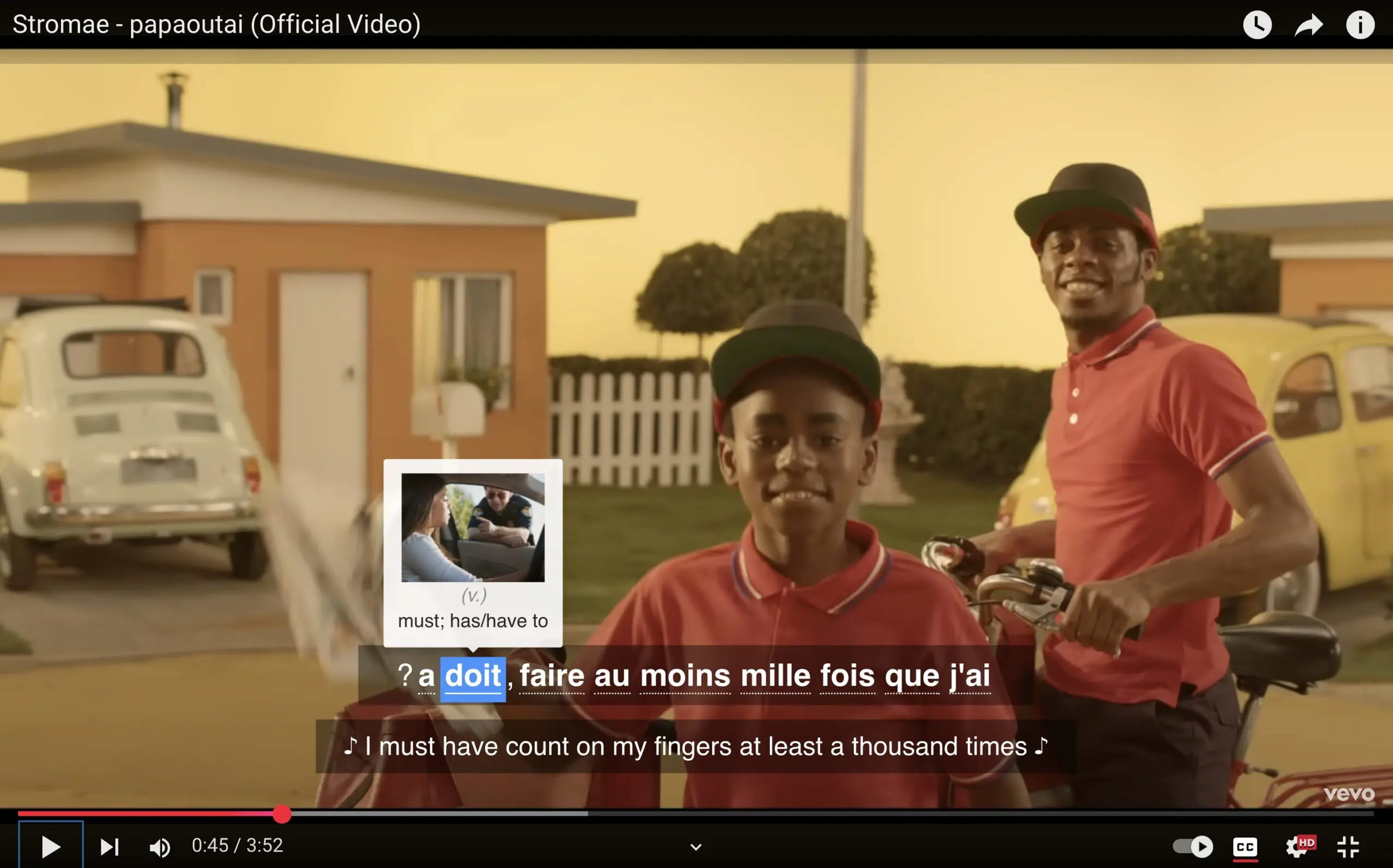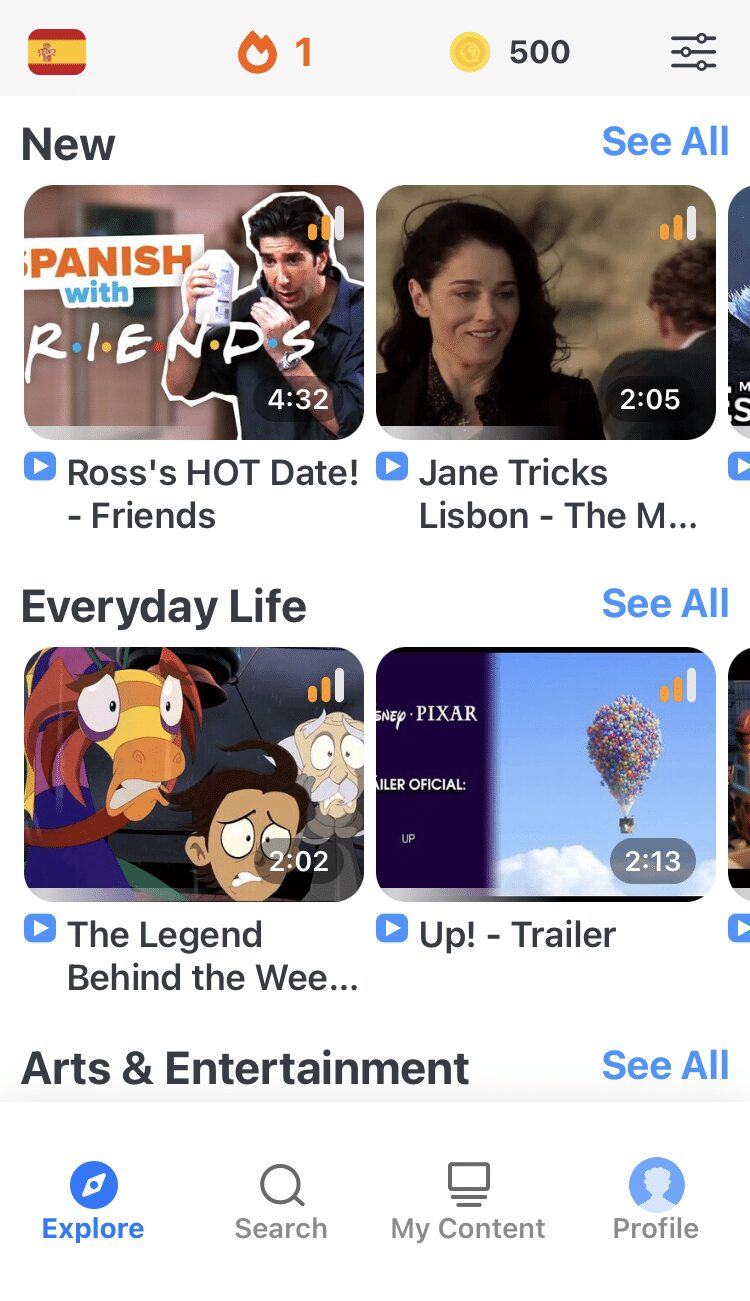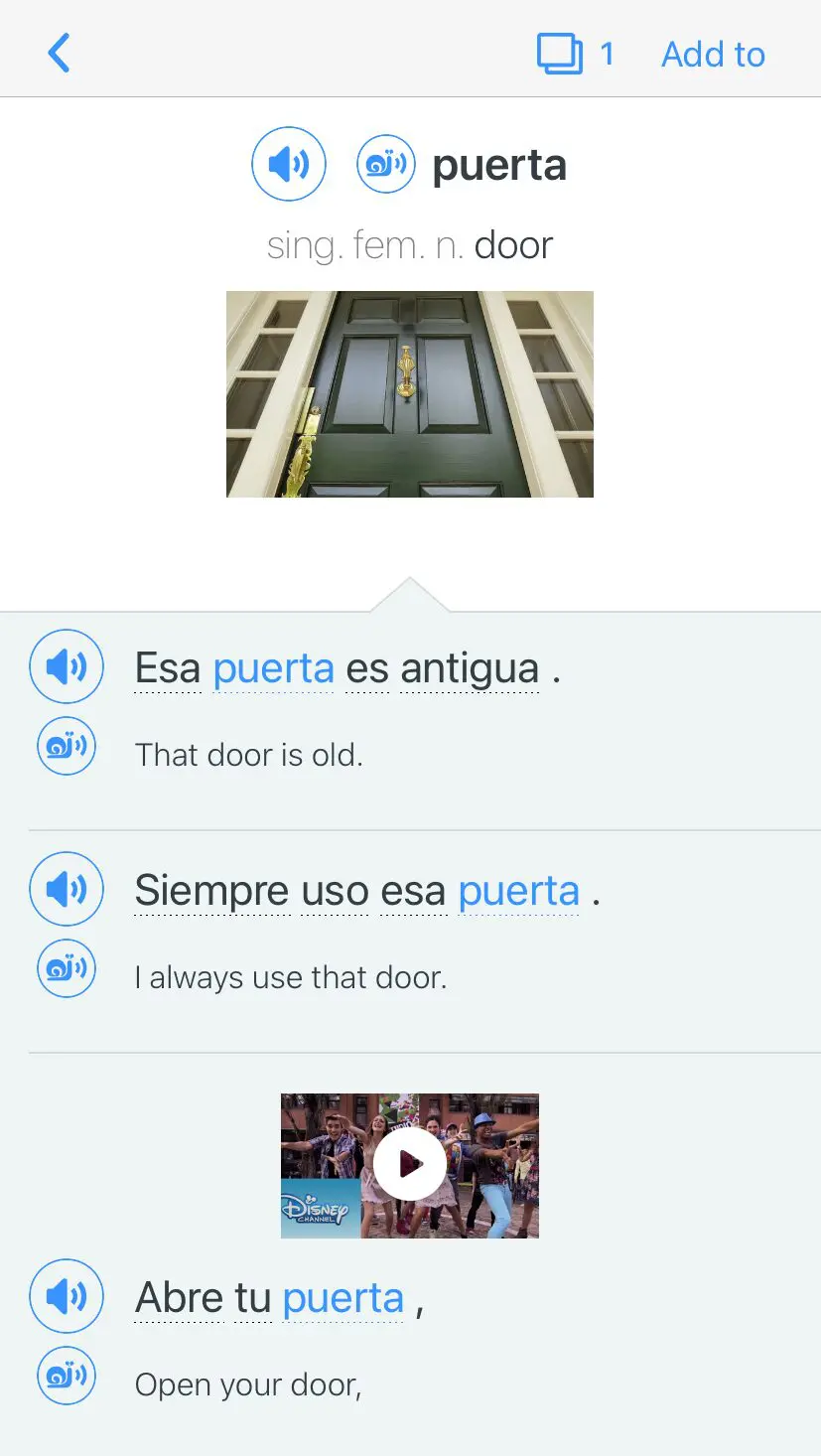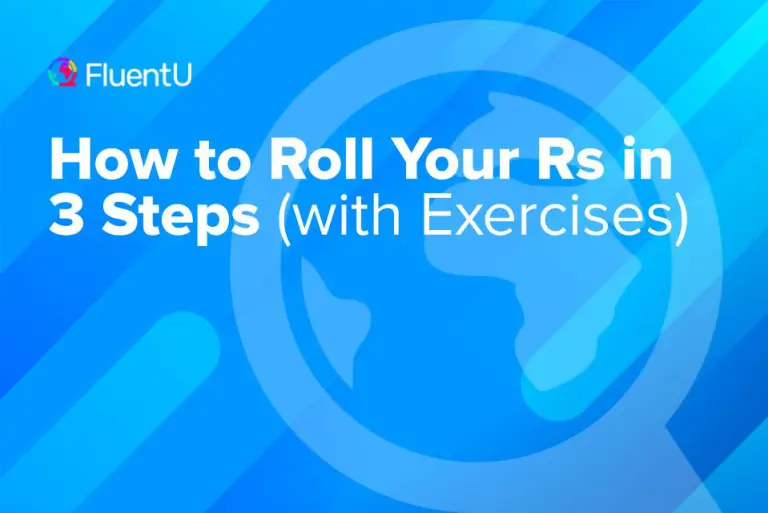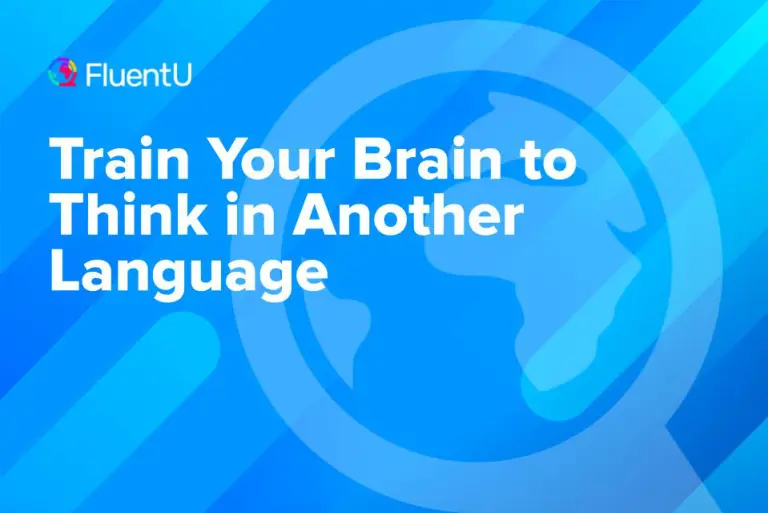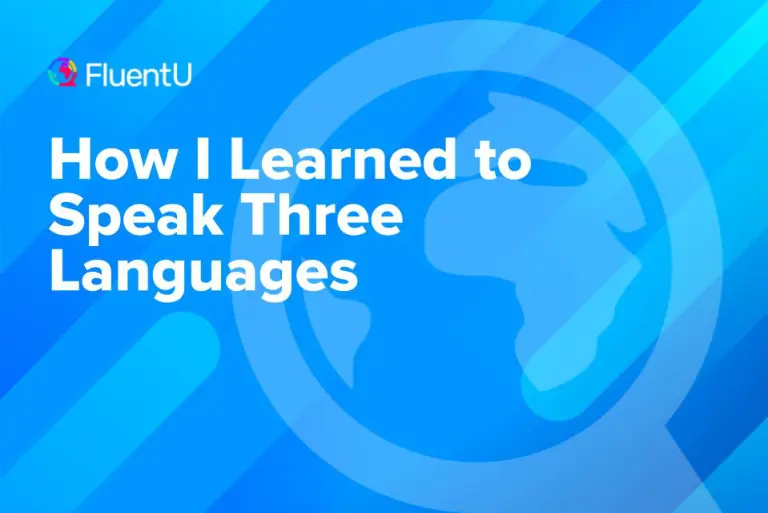How to Learn a Language in 6 Months (According to Experts)
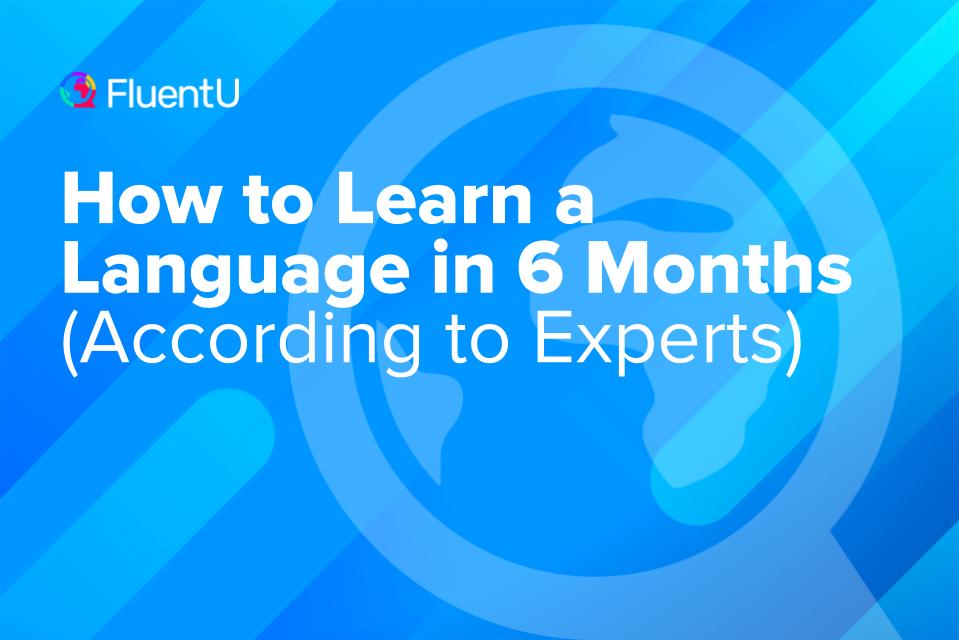
Can you really learn a language in just half a year? In my experience, yes, and experts like Chris Lonsdale, Benny Lewis and Tim Ferriss would agree.
In this post I’ll highlight tips for your own six-month language learning journey and the most important themes from each of these three experts.
Download: This blog post is available as a convenient and portable PDF that you can take anywhere. Click here to get a copy. (Download)
What Should You Do to Learn a Language in 6 Months?
Step 1: Start Using Your Target Language Today
This is something all of our experts agree on, but it might sound counterintuitive to beginner language learners. How can you start using a language before you’ve learned any of it?
In all languages, you already have some words you can access, and when you’re speaking face-to-face or online with someone you can use hands, facial expressions, noises, props and so on to get your meaning across. As you’ll see below, this idea comes from Chris Lonsdale.
I had a very memorable conversation with a Korean learner of English in Seville, who was using limited vocabulary to explain to us the history of a particular Korean liquor. It was (intentionally) hysterically funny, so don’t worry about your speaking partner getting irritated!
Find a native speaker near you, take a trip or go online to find chat buddies. It doesn’t matter if you make mistakes—you will!—as this is all part of the process of learning. As you begin to speak, you’ll get familiar with building sentences, listening to the sound of the language and hearing common phrases and expressions.
Step 2: Familiarize Yourself with the Core Language
A common theme from our expert friends is that you need to focus your early learning on core language. In English, for example, this would include functional words like and, the, a, pronouns, such as she, I, they and the most commonly used verbs like to have, to be and to do.
When you’re in the early stages of learning a language, there will be a steep upward curve as you start to see how you go from saying single words to sentences, and learning these words will form the basis of that.
How do you know which words to learn? Learn the most common words first. Tim Ferriss lists the 100 most common words in written and spoken English, which you can use if you’re an English learner, or otherwise compare to key words in your target language.
You could also try searching for your target language with the term “common words” on Memrise, a digital flashcard app. There are many such lists covering Spanish, Korean, French, Dutch and much more.
All the while, you should be going back to step one: whenever you learn something new, incorporate it into your speaking. For example, in Italian I’ve been trying to correctly use phrases featuring the word ecco, which is similar to the French voila. This means I’ve recently been walking around like a child, pointing at things and shouting “There it is!” Now I think I’ve got it.
Step 3: Set SMART Goals
While a lot of learning will happen naturally as you speak and listen and read and write, you can’t take that for granted. You’ll of course have to put in effort.
Moreover, set SMART goals. It’s one thing to say you want to be fluent in six months, but what does fluency mean for you?
I can give you an example of a goal I set myself last fall. By Christmas, I wanted to be able to hold a full conversation with my Italian girlfriend’s five-year-old niece. So, it was:
- Specific: A successful conversation with a specified person.
- Measurable: Did I do it or not?
- Ambitious: She speaks no English and, as a child, doesn’t always understand that not everyone gets what she says, so it’s a challenge!
- Realistic: I wasn’t expecting to debate the finer points of continental philosophy with a college professor.
- Time-bound: I knew I had to get it done by Christmas.
This was a huge help. I focused on language that would allow me to have that conversation—school, family, toys—and I practiced it whenever I could. The result: success!
Step 4: Use Learning Material You Care About
Our experts note that you need to practice your target language with material that matters to you.
You might consider music to help with your listening. You can use YouTube to find all sorts of different videos. While I was learning Spanish, I picked up a great deal from the rap group Calle 13. Finding music you love in your target language is a fantastic thing to do, as you can listen to it over and over, understanding a little more each time.
Nowadays you can find news sites online in any language, and these are really useful for your reading skills. The language tends to be very functional and informative (whereas literary works are often a little challenging in the early stages). The language is also relevant to a wide range of learners since it gives you up-to-date vocabulary that native speakers are using in their day-to-day lives.
You might also find it useful and entertaining to watch movies and TV shows to learn a new language. I don’t recommend watching passively, though: actively harness the power of movies and TV shows to immerse yourself in the language.
There are also a number of language learning programs that allow you to learn by watching videos and listening to audio clips. They also typically include interactive features to make learning more direct and efficient. One such program is FluentU.
FluentU takes authentic videos—like music videos, movie trailers, news and inspiring talks—and turns them into personalized language learning lessons.
You can try FluentU for free for 2 weeks. Check out the website or download the iOS app or Android app.
P.S. Click here to take advantage of our current sale! (Expires at the end of this month.)
The right material can make your studies more engaging, which can then spur your learning speed and efficiency.
Step 5: Look Up the Grammar
You can practice all you like, but you still have to understand the grammar, right? Well, yes. But grammar study doesn’t have to be the repetitive trawling through books and verb tables that it was in school—this can be the thing that really hampers your attempts to get fluent fast.
If you notice a certain grammatical form when people are speaking to you, look it up! It’ll elucidate the reasoning and allow you to incorporate it into your speaking, which is far better than studying grammar in isolation.
Makes sense, right? Drilling dry grammar rules out of a textbook will only get you so far. For most people, that’s so boring as to kill your drive to learn. But even for people who thrive on book learning, if you’re not seeing and using grammar rules in context, they’ll have very little impact on your actual, measurable language development.
All of this ties into the core principles we’ve been discussing. Make all of your learning relevant and comprehensible, and you’ll hit your target in no time.
Step 6: Keep It Enjoyable
Learning a language should be a challenge but not a chore. If you’re reading this blog, I’m sure you’ll agree that one of the great joys in life is to be able to communicate in a new language, and ultimately speaking is far more important than passing an exam.
So make sure you have fun in your language studies to keep that motivation up for all six months of your study plan. If you’re not sure how to do this, here are a few ideas that have worked for me:
- Make it competitive. I’m an incredibly competitive person, so for me, adding elements of a game can make it extra rewarding to learn a language. This could be with another person. Although this shouldn’t be about one-upmanship, finding a friend who wants to learn and testing yourself against each other can be a big help.
- Write a song. Use some of the vocabulary you have learned to create ditties or translate your favorite song into your new language.
- Use humor. Ask your language partner to tell you some jokes. Once you start understanding foreign-language jokes, you really know you’re getting proficient.
- Eat! Food is obviously the best thing about any new culture, so find some recipes in your target language you can try out and cook for your friends.
Can I Learn a Language in 6 Months? What the Experts Say
What do the experts have to say about this topic? All these guys take a different approach to tackling the problem, but there are some common themes across all of them.
Chris Lonsdale Says: Start Using the Language Immediately
Lonsdale bases his approach around a set of language learning principles and actions. Here are some takeaways from his TEDx talk that are most important to our goal of learning a language in six months:
- Listen to your target language a lot, right from the start.
- Remember that understanding is more than knowing all the words. Use facial expressions, body language, context and style to get meaning right from the get-go, even before you worry about knowing every vocabulary word.
- Focus on core language. In other words, focus on learning high-frequently vocabulary that’s most relevant to you. Lonsdale notes that for most learners, this early “core” language will include sentences like “How do you say that?” and “Can you repeat that, please?”
- Get a language partner (or in Lonsdale’s terminology, a “language parent”). This is a native speaker who’ll support you on your journey and speak to you regularly.
Unfortunately for us, Lonsdale doesn’t exactly answer the question of how to get there in six months. Nevertheless, we can use these actions to help us when we’re creating our study plan.
Benny Lewis Says: “Hack” Language Studies for Faster Learning
Irish blogger Lewis is a well-known polyglot who gained a strong online following over the years. He gave a TEDx talk on “Rapid Language Hacking” to lay out the foundations of his language-learning-fast philosophy:
- Forget the idea that language is a “talent” you either have or you don’t. He claims to have thought he was completely useless at them before starting with Spanish! This myth of language learning talent also comes up in Lonsdale’s talk.
- Remember, it’s almost impossible to know nothing of a language. With nearby languages, there are cognates, i.e. words with the same root. For example, English shares roots of -tion words with Latinate languages like Spanish and Italian.
As an Italian learner, it’s very useful for me to be able to guess words like nazione (nation). Meanwhile, even the most unrelated languages now have a shared vocabulary (Coca-Cola, anyone?).
- Take advantage of the internet to start communicating right away. If you live in a city, there will almost certainly be people who speak your target language around. Otherwise, find friends of friends who would be able to talk with you online from time to time. You can even check out italki to find a professional tutor for one-on-one lessons.
- Use mnemonics to remember words and expressions. This could be thinking of a sound the word reminds you of, or singing an expression to a simple melody.
- Create SMART goals: Specific, Measurable, Ambitious, Realistic, Time-bound. In other words, you should pick concrete goals that’ll challenge you without overwhelming you, and give yourself a deadline for achieving them.
- Like Lonsdale, Lewis says that you should use the language right away. And make mistakes! This will help you to learn and to get over embarrassment about speaking with native speakers.
Lewis uses a lot of different languages in his talk, which lends authenticity.
Tim Ferriss Says: Use the 80:20 to Achieve a Lot in a Little Time
Taking a different tack from the motivational TEDx style of Lewis and Lonsdale, Tim Ferriss takes a more theoretical approach to the goal of learning a language in a few months. He has a three-point approach to language-learning, which incorporates the following:
- Effectiveness: Pick learning materials that’ll work for you and your goals (i.e. “effective”).
- Adherence: Keep motivated and prioritize learning in your life so that you adhere to your study routine.
- Efficiency: Make sure your study regimen and tools are propelling you forward at a reasonable rate.
Importantly, he refers to the Pareto Principle, also known as the 80:20 rule. This is the idea that 80 percent of results of any task come from 20 percent of the input, material or effort. He applies this to learning a language, arguing that—although total language mastery might take years of applied learning—it’s perfectly possible to achieve conversational fluency in three months.
How? Like Lonsdale, Ferriss emphasizes relevance of learning: Don’t read something you wouldn’t care to read about in your native language, as it’ll make it harder to understand, engage with and remember. So, if you’re a Japanese learner interested in baseball, reading about the Japanese leagues might be a perfect place to start.
How Long Does it Take to Learn a Language?
While it’s possible to learn a language in 6 months, learning a language can realistically take anywhere from a few months to several years. It comes down to factors like your own personal goals, study routine, and the language’s similarity to your own.
For a full breakdown of how long it takes to learn different languages and under different circumstances, check out our full post on the topic:
How Long Does It Take to Learn a Language? It Depends | FluentU Language Learning
How long does it take to learn a language? Well it depends, but you can probably breeze through the beginner levels in about three months and hit a comfortable…
So there you have it! Use these tips from the experts to get a hard start on your six-month language learning journey. Good luck!
Download: This blog post is available as a convenient and portable PDF that you can take anywhere. Click here to get a copy. (Download)
And One More Thing...
If you want to learn a new language with real-world videos, let me tell you about my favorite language-learning tool–FluentU.
With FluentU, you can turn any subtitled YouTube or Netflix video into an interactive language lesson. That means you’re not just studying a language—you’re experiencing it exactly as native speakers use it.
No boring drills. No dry textbooks. Just the kind of content you’d actually watch anyway, but with tools to help you learn. My favorite feature lets you import YouTube videos directly into your FluentU account.
And that’s just the beginning! You can also check out our extensive video library packed with music videos, movie trailers, news clips and more!
Everything is organized by difficulty level, media type, and topic, so you can easily find videos that match your interests and skill level.
Personally, I love watching clips from movies and shows where there’s plenty of slang and expressions that will help you understand native speakers–and sound more like them!
As you watch, you’ll follow along with interactive, dual-language subtitles. Come across a new word or phrase? Just hover over it for an instant translation or click to hear its pronunciation, see example sentences, and more.
Once you’re done watching, FluentU reinforces what you’ve learned by showing you more examples of key words and phrases from the video—then quizzes you to check your understanding. You’ll even get extra practice with tricky words and reminders when it’s time to review.
We know what it takes to make real progress in a new language, and we’ve built FluentU to help you get there. You can use FluentU on your computer, tablet, or download our app from the App Store or Google Play.
Ready to start learning? Click here to take advantage of our current sale (it expires at the end of this month). And your first 2 weeks are free!

